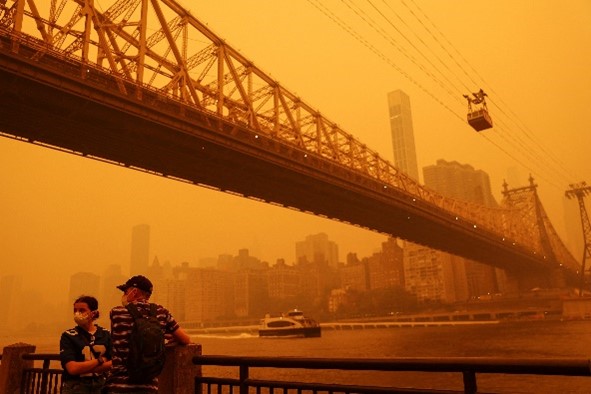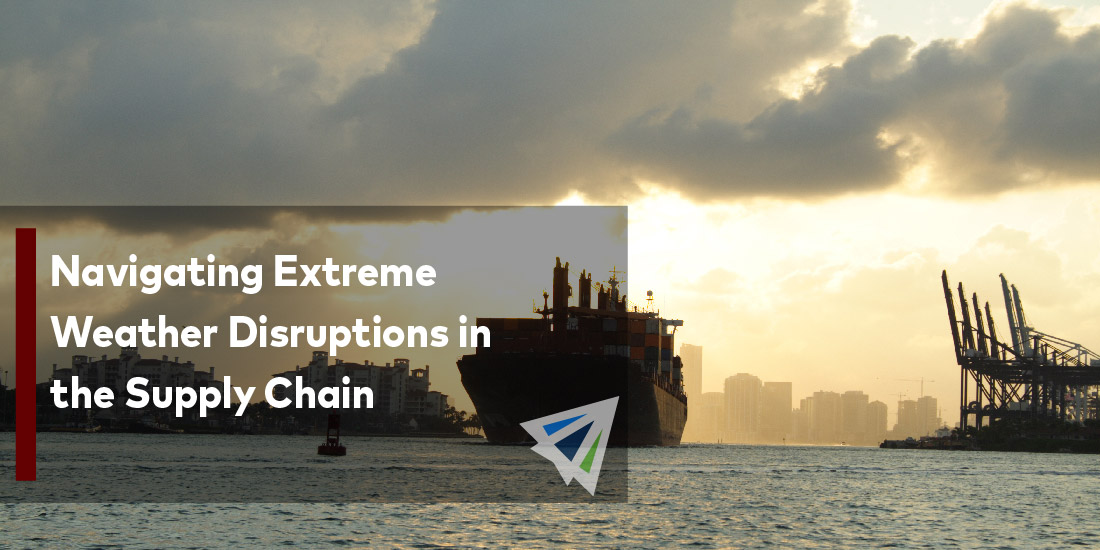When extreme weather events, such as wildfires, hurricanes, tsunamis, drought, and winter weather, occur, it can cause a domino effect to the supply chain. More specifically, extreme weather events can cause delays and disruptions to your shipments.
In the trucking realm, extreme weather events especially winter weather, hurricanes, and tornadoes can pose a real threat to truckers, and with that comes potential (and likely), delays in operations.
Last year was a remarkably warm year in the U.S. “For millions of Americans impacted by a seemingly endless onslaught of weather and climate disasters, 2023 has hit a new record for many extremes,” NOAA Chief Scientist Sarah Kapnick said.
Additionally, a recent report by Everstream Analytics came out predicting extreme weather disruptions will be the top logistics disruptor for supply chains in 2024.
While certain weather events can be forecasted/predicted, there’s always a chance for things to change course, whether for better or worse. That is why staying proactive, diligent, and prepared for when these events take place is crucial.
Have Contingency Plans in Place
It cannot be stressed enough how important contingency plans or alternative options are. Obviously, you hope for the best case scenario with your shipment(s) of goods arriving to their destination, but it is always good to have a back up plan, for those “just in-case” moments.
Check out FreightFM Episode 2 with Interlog’s Vice President Justin Engelmeier discussing the importance of being prepared and proactive when dealing with emergency or unexpected events.
Additionally paying attention and staying up to date with forecasts, advisories and warnings is important to staying proactive in times of uncertainty.
Weather Disruptions Last Year
There were many weather disruptions, too many to list in this blog, but here’s some notable ones.
Canadian Wildfires: Started back in March 2023 and continued to intensify in June, impacting all 13 provinces and territories in Canada. The smoke from the wildfires lingered into the United States, causing poor air quality.
You may remember the eerie looking views in June in New York (and other places) – see the image below for a refresher.

Panama Canal Drought: All throughout last year, the Panama Canal has been dealing with drought, largely due to the El Niño. As the Panama Canal leaves their “rainy” season (which really wasn’t a rainy season) and enters their “dry” season, many are left wondering how this will all play out. The Panama Canal Authority has already issued limits to daily transits, in response to the low water levels.
Hurricane Idalia: In late August, Idalia hit Florida as a Category 3 storm and then intensified to a Category 4 hurricane in 24 hours. Hurricanes are a real threat for truckers operating on coastal interstates and highways.
Flooding on the East Coast: In early July, Vermont experienced historic rainfall that lead to severe flooding and road closures of many miles on state highways and interstates.
Looking Ahead
Should you have any questions regarding this and how it could impact your shipments, please reach out to our team today.
Additionally, we have our weekly market updates that can provide you with relevant freight news, updates, developments across the industry, and more.
